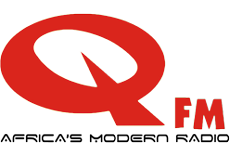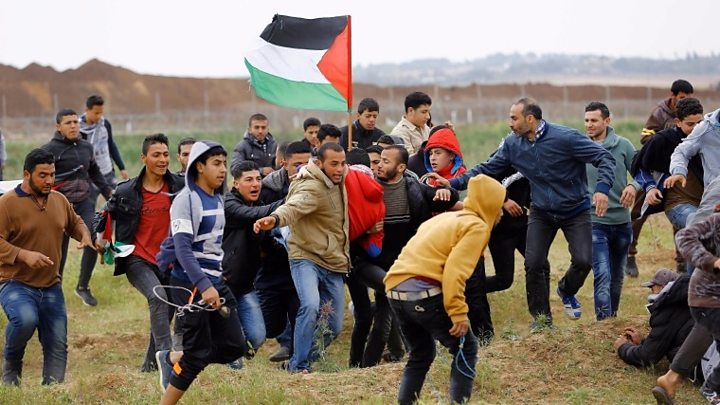Palestinians are observing a day of national mourning for at least 16 people killed in clashes with Israeli soldiers at the Gaza border on Friday.
Thousands of people are attending the funerals. Hundreds were wounded at the start of protests demanding a right for Palestinians to return to former family homes in what is now Israel.
The UN secretary-general has called for an independent inquiry into the deaths.
Israeli officials said soldiers opened fire after rioting broke out.
Friday was the single deadliest day in the Israel-Palestine conflict since the 2014 Gaza war. The UN Security Council condemned the violence after an emergency session.
UN deputy political affairs chief Taye-Brook Zerihoun told the council: “Israel must uphold its responsibilities under international human rights and humanitarian law,” he said.
In a written statement before the meeting, Israel’s ambassador to the UN, Danny Danon, blamed the bloodshed on Hamas – the militant group that controls the Gaza Strip, a Palestinian territory. He could not attend the meeting in person because of the start of Passover.
Thousands of people are attending the funerals of some of the 16 people killed.
Palestinian President Mahmoud Abbas said the Israeli authorities bore “full responsibility” for the deaths.
The UN Secretary-General Antonio Guterres has appealed “to those concerned to refrain from any act that could lead to further casualties”, his spokesman said in a statement.
Protesters are returning to a tent city put up near the border in preparation for the demonstration to resume, said AFP news agency. Palestinians have also called a general strike.
Why was there tension at the border?
Thousands of Palestinians marched to the border at the start of a six-week protest, dubbed the Great March of Return.
The aim of the protest is to assert what Palestinians regard as their right to return to towns and villages from which their families fled, or were driven out, when the state of Israel was created in 1948.
Hamas, the militant group that has controlled the Gaza Strip since 2007, does not recognise Israel, but last year said it was ready to accept an interim Palestinian state limited to Gaza and the West Bank.
Palestinians have pitched five camps near the border for the protest, from Beit Hanoun in the north to Rafah near the Egyptian border.
Israel’s military, which enforces a no-go zone along the Gaza border, doubled its troop presence for the protest.
The country’s foreign ministry called the gathering a “deliberate attempt to provoke a confrontation with Israel” and said that “responsibility for any clashes lies solely with Hamas and other participating Palestinian organisations”.
What do the two sides say happened on Friday?
The Israel Defense Forces (IDF) said there were about 17,000 Palestinians in five locations near the border fence. It said it had “enforced a closed military zone” in the area around Gaza.
Although most protesters stayed in the encampments, some groups of youths ignored organisers’ calls to stay away from the fence and headed closer to Israeli positions.
The IDF said troops were “firing towards the main instigators” to break up rioting, in which petrol bombs and stones were thrown at the fence.
A spokesman said all those who were killed had been trying to breach or damage the border fence, the Jerusalem Post reports.
The Palestinian side accused Israel of using disproportionate force. Tanks and snipers were deployed, and witnesses said a drone was used to drop tear gas in at least one location.
The UN envoy for Palestine Riyad Mansour told the council that more than 1,400 Palestinian civilians had been injured.
BBC
 Q FM Africa's Modern Radio
Q FM Africa's Modern Radio
